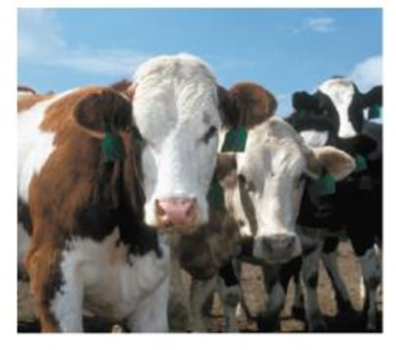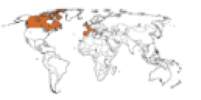
Variant Creutzfeldt-Jakob Disease

Ellen screamed obscenities as she staggered from the room and collapsed in the hallway, jerking uncontrollably and unable to stand. Her parents were shocked that their kind, considerate, and lovable daughter had changed so drastically during the past year. Sadly, she couldn't even remember her siblings’ names.
Ellen had joined the nearly 200 people afflicted with variant Creutzfeldt-Jakob disease (vCJD; what the media call “mad cow disease” because most humans with the condition acquired the pathogen from eating infected beef). Because vCJD affects the brain by slowly eroding nervous tissue and leaving the brain full of spongelike holes, the signs and symptoms of vCJD are neurological. Ellen's disease started with insomnia, depression, and confusion, but eventually it led to uncontrollable emotional and verbal outbursts, inability to coordinate movements, coma, and death. Typically, the disease lasts about a year, and there is no treatment.

Variant CJD resembles the rare genetic disorder Creutzfeldt-Jakob disease (named for its discoverers), which is caused by a mutation and occurs in the elderly. The difference is that the variant form of CJD results from an acquired infection and often strikes and kills college-aged people, like Ellen in our story. For more about vCJD, see pp. 621-623.
- 1. The vCJD pathogen is primarily transmitted when a person or animal consumes nervous tissue (brains). How could cattle become infected?
- 2. Why is vCJD called variant?
- 3. What effect does this pathogen have on cattle?
Want to see the full answer?
Check out a sample textbook solution
Chapter 1 Solutions
EBK MICROBIOLOGY:W/DISEASES BY BODY...-
- What are Clathrin coated vesicles and what is their function?arrow_forwardHow is a protein destined for the Endoplasmic Reticulum (ER), imported into the ER? Be concise.arrow_forwardFind out about the organisations and the movements aimed at the conservation of our natural resources. Eg Chipko movement and Greenpeace. Make a project report on such an organisation.arrow_forward
- What are biofertilizers and mention the significancearrow_forwardPCBs and River Otters: Otters in Washington State’s Green-Duwamish River have high levels of polychlorinated biphenyls (PCBs) in their livers. PCBs can bind to the estrogen receptors in animals and disrupt the endocrine system of these otters. The PCBs seem to increase the estrogen to androgen ratio, skewing the ratio toward too much estrogen. How would increased estrogen affect the river otter population? Based on your reading of the materials in this unit, what factors can affect fertility in humans? Explain how each of the factors affecting human fertility that you described can disrupt the human endocrine system to affect reproduction.arrow_forwardOther than oil and alcohol, are there other liquids you could compare to water (that are liquid at room temperature)? How is water unique compared to these other liquids? What follow-up experiment would you like to do, and how would you relate it to your life?arrow_forward
- Selection of Traits What adaptations do scavengers have for locating and feeding on prey? What adaptations do predators have for capturing and consuming prey?arrow_forwardCompetition Between Species What natural processes limit populations from growing too large? What are some resources organisms can compete over in their natural habitat?arrow_forwardSpecies Interactions Explain how predators, prey and scavengers interact. Explain whether predators and scavengers are necessary or beneficial for an ecosystem.arrow_forward
- magine that you are conducting research on fruit type and seed dispersal. You submitted a paper to a peer-reviewed journal that addresses the factors that impact fruit type and seed dispersal mechanisms in plants of Central America. The editor of the journal communicates that your paper may be published if you make ‘minor revisions’ to the document. Describe two characteristics that you would expect in seeds that are dispersed by the wind. Contrast this with what you would expect for seeds that are gathered, buried or eaten by animals, and explain why they are different. (Editor’s note: Providing this information in your discussion will help readers to consider the significance of the research).arrow_forwardWhat is the difference between Uniporters, Symporters and Antiporters? Which of these are examples of active transport?arrow_forwardWhat are coupled transporters?arrow_forward
 Medical Terminology for Health Professions, Spira...Health & NutritionISBN:9781305634350Author:Ann Ehrlich, Carol L. Schroeder, Laura Ehrlich, Katrina A. SchroederPublisher:Cengage Learning
Medical Terminology for Health Professions, Spira...Health & NutritionISBN:9781305634350Author:Ann Ehrlich, Carol L. Schroeder, Laura Ehrlich, Katrina A. SchroederPublisher:Cengage Learning- Understanding Health Insurance: A Guide to Billin...Health & NutritionISBN:9781337679480Author:GREENPublisher:Cengage





